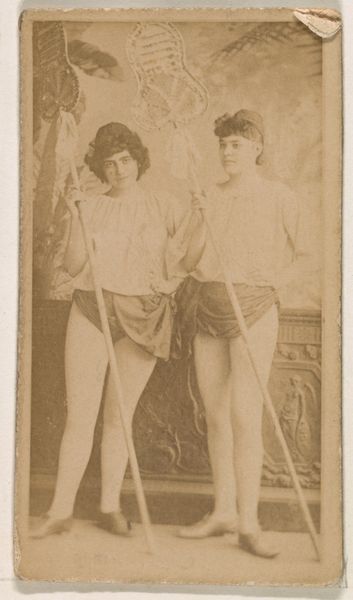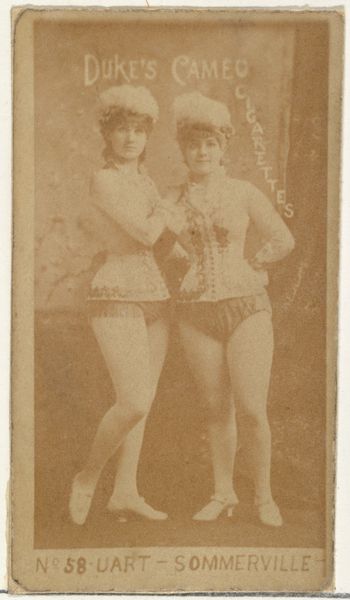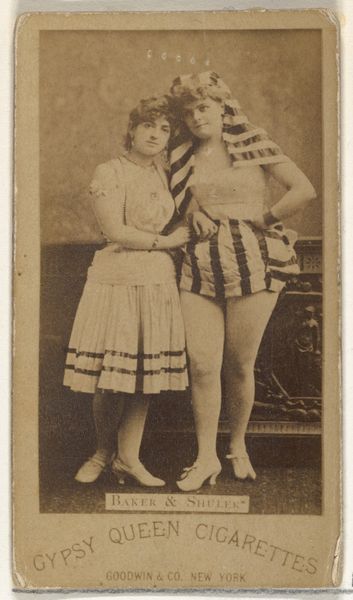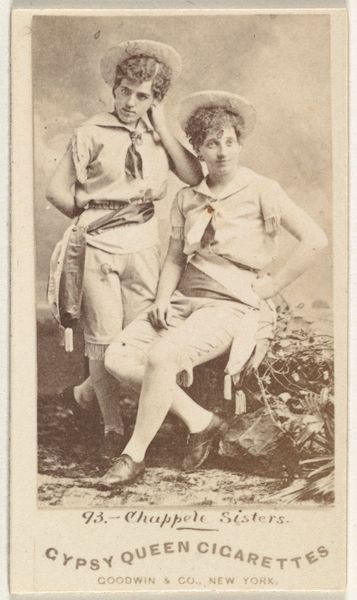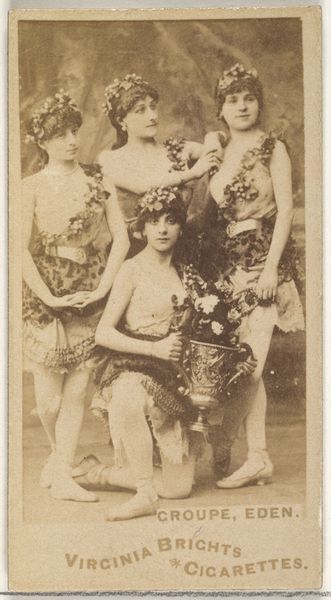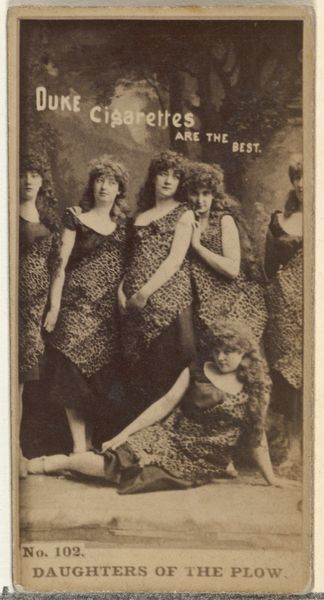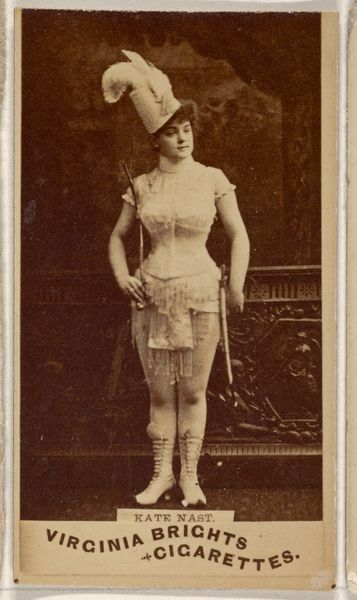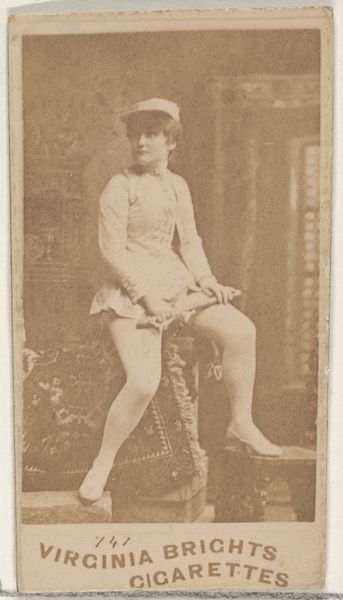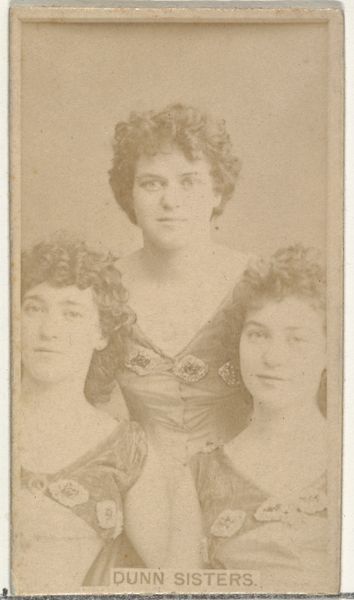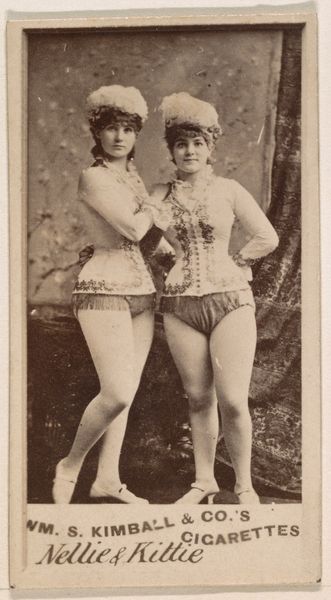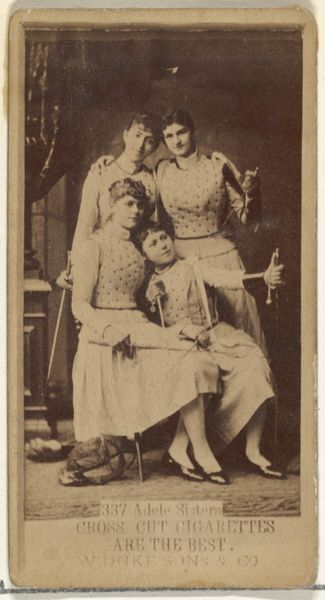
Card Number 725, Pages "The Mascotte," from the Actors and Actresses series (N145-3) issued by Duke Sons & Co. to promote Cross Cut Cigarettes 1880s
0:00
0:00
drawing, print, photography
#
portrait
#
drawing
#
photo restoration
# print
#
impressionism
#
photography
#
19th century
#
genre-painting
Dimensions: Sheet: 2 11/16 × 1 3/8 in. (6.8 × 3.5 cm)
Copyright: Public Domain
Curator: The object you are now viewing is "Card Number 725, Pages 'The Mascotte,'" an advertising piece for Cross Cut Cigarettes produced by W. Duke, Sons & Co. sometime in the 1880s. It’s currently part of the Metropolitan Museum of Art’s collection. Editor: My first thought is how tactile it feels just looking at it. You can almost smell the old paper and ink, see the embossed texture... It looks so ephemeral for something mass-produced to sell a product. Curator: Exactly. These cards, distributed with cigarette packs, offered visual cues to status, aspirations, and desired identities. Here, the symbol is "the actress," readily associating a glamorous, progressive image with the tobacco brand. Editor: And the costumes! These outfits feel…transitional. They're theatrical, hinting at performance and role-playing, yet constrained by what appears to be somewhat restrictive materials. I'm curious about the textile production. Curator: Costume held incredible power. Fashion itself symbolized modernity, leisure, and aspiration. So the semiotics here function on many levels; theatrical costume becomes codified, absorbed into the mainstream through media like this. Editor: Right, it’s a glimpse into the industrialized image-making of the era. W. Duke, Sons & Co., as tobacco manufacturers, weren't just selling cigarettes; they were participating in a broader cultural production, creating a symbolic economy centered on these small tokens. These images entered circulation in such an interesting way—bought, traded, and displayed like miniature artworks. Curator: The performative aspect resonates so clearly. These cards created a sense of intimacy through portraits—"mascots" linking consumer desires with imagined lives of public figures and stage personalities, icons of their time. Editor: It makes me consider how this particular format—the small, easily collectable card— shaped consumer habits. How did this blend of industry, entertainment, and advertisement shift both the consumption of art and of tobacco? What was lost or gained? Curator: Perhaps the democratization of the "actress" is visible in how easily her image entered circulation and how she acted as a symbol. I would love to see this work juxtaposed with its predecessors and followers—what images did it allude to, and what was built off its model? Editor: Absolutely. It leaves me considering how deeply entangled materiality, labour, and cultural messaging are. It reveals just how potent everyday objects are.
Comments
No comments
Be the first to comment and join the conversation on the ultimate creative platform.
